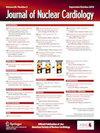美国核心脏病学会心脏淀粉样放射性核素成像质量标准
IF 2.7
4区 医学
Q2 CARDIAC & CARDIOVASCULAR SYSTEMS
引用次数: 0
摘要
美国核心脏病学会的这份文件为进行心脏淀粉样放射性核素成像的实验室制定了质量评估指标。这些指标基于临床指南、适当使用标准、信息和立场声明以及专家意见。该文件介绍了 15 项质量指标,这些指标围绕 4 个轴心来解决目前的医疗差距:A) 适当的适应症;B) 患者体验和工作流程;C) 仪器和协议;D) 解释和报告。随着心脏淀粉样蛋白成像技术的应用日益广泛,我们的实验室必须保持较高的质量水平,以维护成像技术为患者带来的价值。实验室应适当选择患者进行成像检查,避免低价值成像。在进行检查前应向患者提供适当的教育,必须及时提供检查机会,并定期评估患者的体验和满意度。严格遵守既定方案并定期评估实验室质量控制至关重要。所有疑似心脏淀粉样变性的患者都应进行实验室检查以排除浆细胞异常。最重要的是,所有患者的解释都应基于 SPECT 而非平面成像。研究报告应包括足够的技术细节,以便正确解读研究结果,其结论应清晰明确,以指导临床治疗。实验室可利用从这些指标中获得的数据找出不足之处,并采取质量改进措施,最终改善患者的预后。本文章由计算机程序翻译,如有差异,请以英文原文为准。
American Society of Nuclear Cardiology quality metrics for cardiac amyloid radionuclide imaging
This document from the American Society of Nuclear Cardiology develops metrics for the assessment of quality for laboratories that perform cardiac amyloid radionuclide imaging. These metrics are based on clinical guidelines, appropriate use criteria, information and position statements, and expert opinion. The document introduces 15 quality metrics that address current gaps in care organized around 4 axes: A) Appropriate indications; B) Patient experience and workflow; C) Instrumentation and protocols; and D) Interpretation and reporting. With the increasing use of imaging for cardiac amyloid, it is imperative that our laboratories maintain a high level of quality to preserve the value that imaging provides to patients. Laboratories should perform imaging in appropriately selected patients avoiding low-value imaging. Proper education should be provided to patients prior to performing testing, timely access to testing must be available, and periodic assessment of patient experience and satisfaction should be the norm. Strict adherence to established protocols with periodic assessment of laboratory quality control is essential. Laboratory studies to rule out plasma cell dyscrasia should be performed in all patients suspected of having cardiac amyloidosis. Crucially, interpretation should be based on SPECT rather than planar imaging in all patients. The study report should include sufficient technical details to allow for proper interpretation of study findings and its conclusion should be clear and unambiguous to guide clinical management. Laboratories can use data derived from these metrics to identify areas of deficiency and introduce quality improvement initiatives, which will ultimately improve patient outcomes.
求助全文
通过发布文献求助,成功后即可免费获取论文全文。
去求助
来源期刊
CiteScore
5.30
自引率
20.80%
发文量
249
审稿时长
4-8 weeks
期刊介绍:
Journal of Nuclear Cardiology is the only journal in the world devoted to this dynamic and growing subspecialty. Physicians and technologists value the Journal not only for its peer-reviewed articles, but also for its timely discussions about the current and future role of nuclear cardiology. Original articles address all aspects of nuclear cardiology, including interpretation, diagnosis, imaging equipment, and use of radiopharmaceuticals. As the official publication of the American Society of Nuclear Cardiology, the Journal also brings readers the latest information emerging from the Society''s task forces and publishes guidelines and position papers as they are adopted.

 求助内容:
求助内容: 应助结果提醒方式:
应助结果提醒方式:


